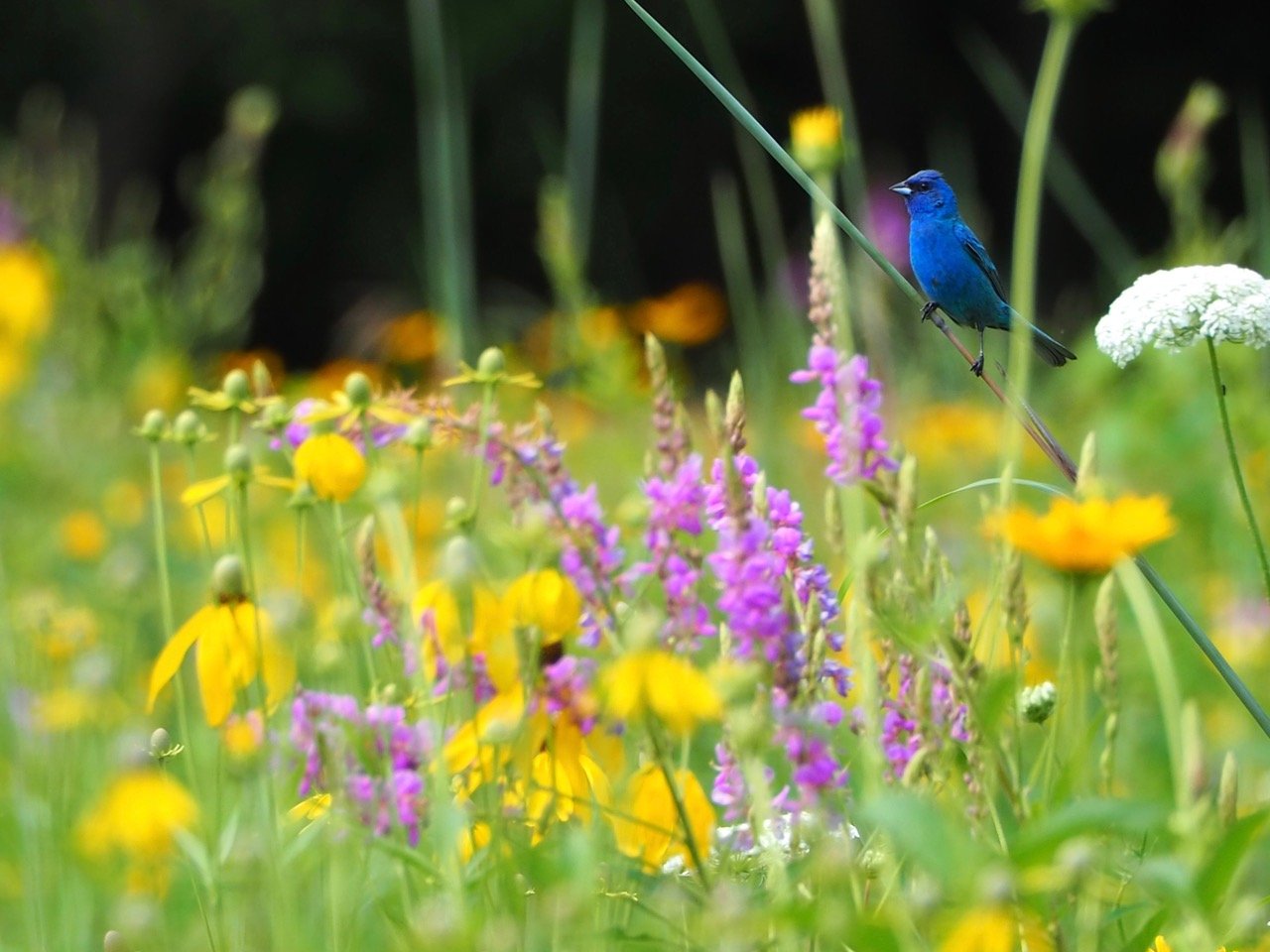
Detroit Bird City
Detroit Bird City (DBC) restores unused land into native flower meadows, creating habitat for birds and pollinators and providing greenspace respites for community members, while requiring less time and maintenance from the city. Detroit Bird Alliance partners with the Detroit Parks and Recreation Department and General Services Department and the US Fish and Wildlife Service to transform underutilized city parks and their neighboring vacant lots into Detroit Bird City parks.
At each park we apply:
Community engagement and planning
Restoration through planting native flower meadows
Installation of signs, benches, and pathways; and
Educational programs and conservation events.
Each meadow takes around three years to establish, after which it needs very minimal maintenance. Once fully established, the meadows require far less maintenance than a turf grass lawn, saving Detroit city parks and community members significant time and money. These meadows show an alternative understanding of natural habitat as an aesthetic resource that provides ecological functions such as pollination, stormwater capture, carbon sequestration as well as air and water pollution mitigation. Pathways, benches, and informative signage ensure that the parks appear purposeful, safe, and welcoming. Each Detroit Bird City park is an example of natural habitat as intentional, and inviting, rather than neglected and inaccessible.
The Detroit General Services Department and Parks and Recreation Department is responsible for 308 parks. However, 52 of these parks are not maintained as conventional parks due to budget constraints, and many are indistinguishable from vacant lots. To Detroit residents, these vacant lots and empty parks reinforce feelings of neglect and provide sites for crime, such as trash dumping, arson, and illicit drug use. Residents often spend considerable amounts of their own time and money to maintain these spaces. Of the few studies that have looked at greening efforts and improved safety, all have found that these efforts resulted in fewer gun assaults and total crimes as well as increased feelings of safety. Increased safety can lead to increased usage of green space, lower levels of stress, and increased community cohesion.
It is our intention that these parks serve as a replicable model for sustainable use of land in Detroit and many other post-industrial cities throughout the USA.
Installed Meadows
| Park | Acres of Meadow | Address | Install Date |
|---|---|---|---|
| Callahan 1 (central area) | 2 | 3356 E Ferry | 2019 |
| Palmer 1 (7 Mile & Woodward) | 2 | 19021 Woodward | 2020 |
| Lifsitz | 1.34 | 2670 Gladstone | 2021 |
| McKinley-Merrick | 0.65 | 5200 McKinley | 2021 |
| Bryant-Vermont | 0.7 | 5170 Vermont | 2021 |
| Callahan (corner sections) | 2 | 3356 E Ferry | 2022 |
| Riverside 1 (sled hill) | 1.6 | 3085 W Jefferson | 2022 |
| Historic Fort Wayne | 3.5 | 6315 W Jefferson | 2023 |
| Riverside 2 (railroad) | 1 | 3085 W Jefferson | 2023 |
| Fitzgerald | 0.5 | 16850 Prairie St | 2023 |
| Joe Louis Greenway 1 (Joy to Tireman) | 4.18 | 8569 Alpine St | 2023 |
| TOTAL ACRES INSTALLED | 19.47 |
2024 Meadows
| Park | Acres of Meadow | Address | Install Date |
|---|---|---|---|
| Joe Louis Greenway 2 (Tireman to Warren) | 6 | 8034 W Warren | 2024 |
| Chandler Park | 7.68 | 12831 Frankfort St | 2024 |
| Palmer 2 (along woods and lake) | 9.18 | 19201 Woodward | 2024 |
| Hunt | 1.35 | 520 Winchester | 2024 |
| Warren-Meldrum | 3.5 | 4742 Meldrum | 2024 |
| TOTAL ACRES TO INSTALL 2024 | 27.71 |
2025 Meadows
| Park | Acres of Meadow | Address | Install Date |
|---|---|---|---|
| Patton | 5.5 | 8151 Dix Highway | TBD |
| AB Ford | 5.75 | 100 Lenox St | TBD |
| Dorais | 5 | 20101 Mound Rd | TBD |
| O'Hair | 5.16 | 19400 Pembroke Ave | TBD |
| Heilmann | 1.45 | 19601 Brock Ave | TBD |
| TOTAL ACRES TO INSTALL 2025 | 22.86 |

